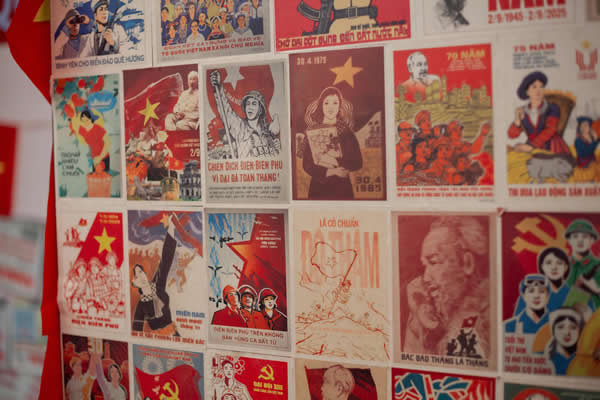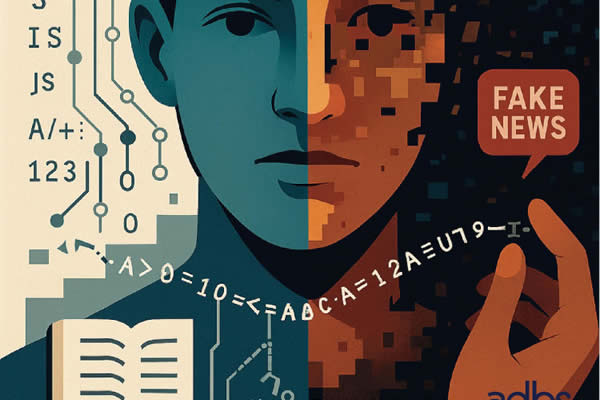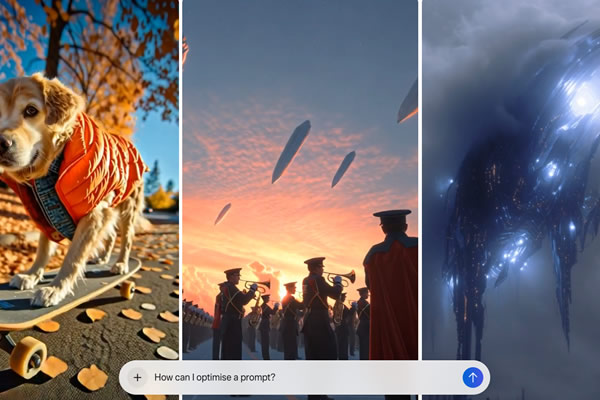Summary of the public defense of my PhD thesis, April 30, 2020, under the supervision of David Domingo and Seth van Hooland (Université Libre de Bruxelles). Members of the jury: Juliette De Maeyer (University of Montreal), Sylvain Parasie (Sciences Po Paris), Sébastien De Valériola (ULB), Florence Le Cam (ULB). President of the jury: Pascaline Merten (ULB).
The robot metaphor is regularly used to refer to automated processes for producing news. Their particularity is transforming structured data into texts, graphics, or any other form of visual representation. Dealing with repetitive and time-consuming tasks is one of the main arguments regularly put forward to promote news automation within newsrooms. These systems are regularly recognized for their qualities of speed and precision. They make it possible to produce standardized and large-scale content. They can follow a logic of personalization, as part of audience segmentation strategies, or be part of a service perspective, for example, to provide election results according to the reader’s location. They are also used to extend media coverage areas, for example, for results of sports events that had little or no coverage until then. News automation can be delivered as is, or as drafts that journalists will enrich with their expertise. This second aspect of news automation is explored in this thesis: when news automation technologies are designed as journalism tools to support investigative work or daily routines
At the heart of this research
In this research, I was interested in how these artifacts could fit into journalistic practices. Considering that one cannot use technology without representing it, I wondered about the influence of these technologies’ representations in the structuring of uses. My first hypothesis was that the robot metaphor would be a source of resistance because of the professional and identity questioning that it can induce. My second hypothesis considered that journalistic uses would depend on automated productions’ adequacy with the know-how and requirements of journalism. These two hypotheses were explored in two stages: in the first part, dedicated to analyzing social representations and cultural practices connected with the automation of the production of information; and in the second part dedicated to two case studies conducted in two newsrooms in French-speaking Belgium.
The first case study was dedicated to the “Bxl’air bot” project, which consisted of an automated online platform that aggregated and processed data relating to air quality in the Brussels region. The second case study was about the « Quotebot » project, that aims to support journalists in their daily coverage of stock markets.
The method relied mainly on participant observation, which required a constant search for a balance between the researcher’s engagement and the necessary critical distance from the observations made to their analysis. It gave me access to critical research material that I would not have been able to access otherwise. My research material also included form surveys, semi-structured interviews, participant observations in editorial or working meetings, numerous email exchanges, and access to internal documents. My purpose was to vary the angle of observation to enrich the analysis, in an approach supported by a transdisciplinary theoretical framework. Specific research methods were used in each case study, taking into account their specificities, with, on the one hand, an assessment of the quality of the public data used in « Bxl’air bot », to meet the technical and journalistic challenges; and on the other hand, user experience-oriented evaluations, a concept related to the notion of pleasure in use.
Lessons learned
If we consider the first research hypothesis, the representational duality conveyed by the robot metaphor can help forge uses but also non uses. However, it did not appear to be a determining element in these two projects. Moreover, it is not the only representational variable participating in the structuring of uses. In both cases, we will see a symbolic adoption use, which relates to the acceptance of the idea of innovation, and which will essentially be at a discursive level. We will also see a logic of evaluation use that depends on the representations of technology. A lack of interest in the topic of air quality can also explain these nons. These various representational considerations find an extension when we look at the adequacy of automated productions with journalism’s know-how and requirements.
In the « Bxlair bot » experiment, the accuracy of the data was a prerequisite for their automation, to meet journalistic requirements for reliability and precision. But to achieve this, human monitoring was necessary throughout the experience. Indeed, this was public data disseminated on web pages, whose changing format presented potential quality problems. This activity, which I took over, remained invisible to journalists, although it was considered « important » that there was a human behind the automated application. My professional experience in journalism has been able to guarantee, in the eyes of a journalist, that the fundamentals of the profession have been respected. Experience has also shown that it is difficult to project into end uses in the context of long-term journalism. Not all scenarios could be considered at the start of the experiment, and the needs became clearer during the preparation of the articles for publication. One of the main challenges was using data to get a journalistic angle, when usually the reverse is true.
If we consider the second research hypothesis, the respect for journalistic requirements appeared to be decisive. Two prerequisites appear in the perspective of end uses: firstly, the reliability and precision of the data and, secondly, editorial expertise, which also relates to expertise of the application domain, which must be shared between social agents from the worlds of journalism and technology. On a professional level, this implied a reconfiguration of practices related to the peculiarities of a data-based journalism approach, sometimes linked to the logic of a process implying that journalists have to deconstruct their writing way to standardize it. In both cases, the meaning given to automated productions will be that of journalistic mediation.
Lessons learned from two experiences are that journalists’ inclusion in the design process facilitates uses but does not guarantee them. Another point of convergence is to be found in a requirement to respect journalism’s fundamentals, within the framework of a partnership where the journalist retains the monopoly of meaning. This posture makes it possible to affirm the journalist’s added value, without calling into question his specificities. Also, journalists’ discursive positioning may evolve, so far as the possibilities and limits of innovation are discovered. This research correlates with the results of previous research relating to the dissemination of technological innovations in newsrooms. It underlines the dual relationship between journalists and technologies, and it highlights resistance mechanisms observed for decades. This research also testifies to the mutual shaping between social and technical. What is new here relates to the technological imaginaries carried by the robot metaphor, which will essentially be played out on a discursive level.
The contributions of this research are those of having been able to follow from within the socio-technical construction process of a nascent phenomenon in French-speaking Belgium and having developed evaluation methods inspired by ICT that can be replicated later. It is also that of having been able to highlight the role of new actors in the world of the information who, although they deny themselves to be an act of journalism, actively participate in the chain of production of information.
References (interactive database EN)
https://ohmybox.info/database/newsautomation-references/
References (interactive database FR)




